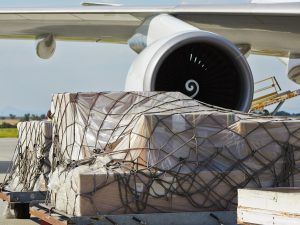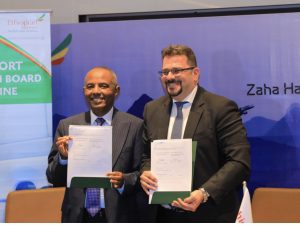Sushant Nigam, Executive Director, ACAAI says, “Transition from the traditional to the digitised approach is a welcome move which needs to be discussed with all stakeholders for perfect integration. Warehousing processes, like discrepancy recording and amendment processes (arising out of mostly inadvertent excess / short landing of packages, incorrect or peeled-off labels, receiving / delivering EXIM cargo etc.), require technological solutions to cut down time & efforts consumed by involvement of multiple stakeholders and paperwork.”
Read More »‘This initiative will make India globally competitive’
CK Govil, President, The Air Cargo Agents Association of India says. “The Indian government’s plan to automate customs processes by 2026 is a forward-thinking move that will enhance efficiency, reduce delays, and minimise human error. This digital transformation is expected to streamline trade, boost economic growth, and improve transparency, positioning India as a more competitive global trading hub.”
Read More »‘Customs 2.0 is a long-awaited step to boost ease of doing business’
Vineet Malhotra, Co-Founder & Director, Kale Logistics Solutions says, “Customs 2.0 is a long-awaited step toward making India more pro-business and improving ease of doing business. With automation in payments, approvals, and interfaces, we expect significant progress and a reduction in logistics costs across the country, driving greater efficiency and economic growth.”
Read More »‘Govt. aims to digitalise customs processes by April 2026’
According to the official reports, “The government is planning to digitalise the customs process by April 2026 and bring more departments on board the single window interface for facilitating trade (SWIFT) portal to expedite the clearance procedure. According to the reports published online, “The aim is to enhance ease of doing business for importers and exporters, boost EXIM trade and reduce the turnaround time.”
Read More »Global air freight rates fluctuate, movement continues: TAC Index
According to the TAC Index price reporting agency, “Global airfreight rates have been slightly changed, but there is movement on individual lanes. The overall Baltic Air Freight Index (BAI00) was down by just -0.1% in the week to August 19 – maintaining the solid pattern of recent weeks. The year-on-year gain now stands at +10.8%. The unchanged overall picture did hide considerable movement up and down on individual lanes, however. The index of outbound routes from Hong Kong (BAI30) gained a further +0.6% week on week, taking its year-on-year gain to +22.9%. But outbound rates from Shanghai slipped 1.2% WoW, though leaving its rise YoY at a robust 28.1%. There were also gains on rates from Seoul to Europe, while those out of India fell back a little after the huge rises earlier this year. Rates from Vietnam fell to Europe but rose again to the US.”
Read More »‘Infra in India needs to be aligned with the standards set by established transshipment hubs worldwide‘
Satyaki Raghunath, Chief Operating Officer, Bangalore International Airport (BIAL) says, “The existing air cargo infrastructure in the country demands substantial improvements to align with the standards set by established transshipment hubs worldwide. The last-mile connectivity and road and rail links to major ports and airports hinder seamless cargo movement, affecting the overall efficiency of transhipment operations. Equally crucial is the need for a skilled workforce equipped with the necessary expertise to efficiently manage and oversee the operations of a transhipment hub. India faces strong competition from well-established transhipment hubs in the region, such as Singapore, Dubai, and Colombo. These hubs have mature infrastructure, streamlined processes, and a long history of efficiently handling large volumes of transhipment cargo. While India is adopting modern logistics technologies, the pace of implementation and adoption across all ports and airports varies, leading to inconsistencies in service levels. Additionally, the operational costs remain high compared to major competitors. To overcome these obstacles, concerted efforts must be made to invest in upgrading infrastructure, enhancing the capabilities of the workforce, and embracing technological advancements in cargo handling and processing., ultimately improving India’s attractiveness as a transhipment hub.”
Read More »‘Optimising cross border logistics with sustainability’
Kamesh Peri, CEO, Celebi Terminal Management India says, “Recent efforts to enhance multimodal cross-border logistics have seen significant contributions from both the government and private sector, with Celebi playing its own role. The Indian government has invested in infrastructure upgrades, including expanded ports and modernized airports, through initiatives like the Sagarmala Program and Dedicated Freight Corridors. The National Logistics Policy also aims to streamline regulations and boost efficiency. In the private sector, Celebi amongst others has adopted advanced technologies such as automated cargo systems and real-time tracking to improve logistics operations. Strategic partnerships with other logistics providers have been formed to create integrated solutions. Additionally, Celebi is focusing on sustainability with eco-friendly practices and energy-efficient technologies. These combined efforts are essential for optimizing cross-border logistics and creating a more efficient and sustainable logistics network.”
Read More »CONCOR, IIT sign MoU to enhance R&D in logistics and SCM
The Container Corporation of India (CONCOR) has entered into a strategic partnership with The Indian Institute of Technology (IIT) Roorkee through the signing of a MoU to advance research and development in the fields of logistics and supply chain management. The MoU was signed by Professor Akshay Dvivedi, Dean of Sponsored Research & Industrial Consultancy at IIT Roorkee, and Ritu Narang, Senior General Manager (MIS) at CONCOR. Professor Amit Upadhyay from the Department of Management Studies at IIT Roorkee will play a key role in this collaboration, actively participating in all related research activities. This collaboration between IIT Roorkee, a leading academic institution in India, and CONCOR, a major player in multimodal logistics services, is aimed at fostering research, innovation, and capacity-building initiatives. The partnership will focus on developing advanced optimisation models to improve the efficiency of containerised freight transport across India’s railway network, with a particular emphasis on the Western Dedicated Freight Corridor. As part of the MoU, IIT Roorkee will leverage its academic and research expertise to conduct an in-depth Operations Research study. The study aims to optimise the loading of Twenty-Foot Equivalent Units on double-stack trains, to reduce container rail haulage costs and enhance inter-terminal movements through rail transhipment hubs. Additionally, the collaboration will involve creating an optimisation-based decision support system to facilitate the efficient movement of container trains across CONCOR’s network.
Read More »Ethiopian Airlines signs join forces to build Mega Airport City
Ethiopian Airlines Group has signed a contract with Dar Al-Handasah Consultants to build a ‘Mega Airport City’ at Abusera in Bishoftu City that will include over 100,000sq m of cargo and support facilities. The site, 40 km from the existing Addis Ababa Bole International Airport, lies about 20 km south east of the city centre on the main A1 road to the south. According to Ethiopian Airlines, the Mega Airport City will have a capacity of 110m passengers each year, four times the current capacity of the existing gateway.
Read More »FedEx launches new smart solution for time-sensitive shipments
FedEx Express has launched an intelligent solution for monitoring and intervention of time-sensitive shipments that offers customers enhanced control and visibility. FedEx Surround uses advanced sensor technology including SenseAware ID with near real-time data analytics to provide continuous monitoring and proactive interventions, says release. The system is based on a lightweight, compact sensor that transmits the precise package location every two seconds via Bluetooth Low Energy to WiFi access points or gateway devices throughout the network. FedEx said that packages can be tracked hundreds of times compared with only a few dozen of times with traditional package scanning equipment and that the system provides unprecedented levels of real-time shipment location data. The carrier adds that artificial intelligence and machine learning can predict potential disruption, allowing it and its customers to swiftly make informed decisions.
Read More » Cargo Breaking News
Cargo Breaking News









